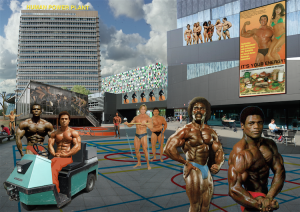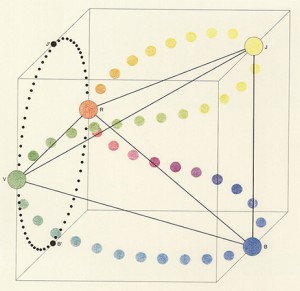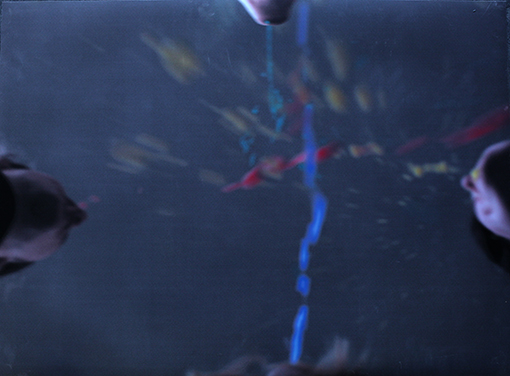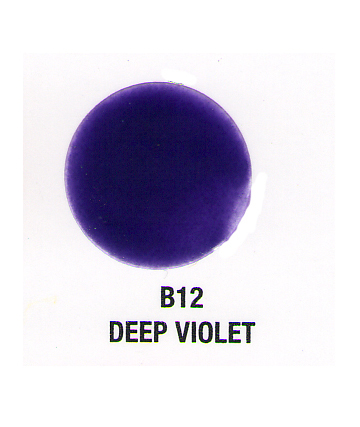It is quite common to notice that we have been focusing on automatizing, and motorising any of our work related physical efforts. As for example, the number of workers in a factory has nothing to do with what it was 30 years ago, and also nothing to do with what it was 100 years ago, and it hasn’t increased for sure. As a paradoxical consequence (that can have also other different causes), it is also amusing to observe that in order to stay healthy, more and more people start to work out, going at the gym. The gym has even become a social environment, where people share their tips and advice, and help one another reaching his goal of physical performance.
This is what Melle Smets points out in his project: the human power plant. The thing is that according to this “gym” trend, the energy that we produce with our physical efforts nowadays is completely wasted, as we only see it as muscle training; we don’t run on the treadmill to make cold water hot but to get a nice ass. It seems unnecessary to develop how a nice butt is useful to sustain life. Anyway, all of these machines that are handling so much effort could actually stock the energy to use it afterwards. The human power plant project is a proposal of the use of human physical effort to create the energy that we require in our daily life. In their first case study, they planned a conversion of one building of the Utrecht University into a 100% human-powered student house. On the other hand, in its concrete realisation, the project is still quite utopic or futuristic, as the prototypes are for the moment only to charge a phone or a laptop, and the latest to heat a Jacuzzi…
Going back to human attitude towards effort optimisation, we can also to a certain point qualify this quest for automatizing and motorising any work related effort, as the natural egocentric human condition of wanting to do what we want, and not being a machine, or not being a clone. It can also be directly linked with artistic activity, in a way that it commonly comes from us wanting to get something out of what we think is our singular identity or thoughts. Or the link could also be that art is commonly/traditionally seen as completely useless, when artists are the most passionate about their job. Wouldn’t it mean that we just want to make ourselves useless? We could argue in this way to conclude that we obviously live to die. But then, why not act as a mere gear in this gigantic mechanic world? We can observe to confirm what was said before a relentless research to motorise the perpetual motion we live in, with very contrasted fields of research like Leonardo da Vinci, Nikola Tesla, or more recently Theo Jansen. Of course, their views on this topic are all very different, and even how they consider or see this topic varies. For example, Theo Jansen’s approach absolutely didn’t think of the “perpetual motion motor” side of his creation, he just wanted to create life. And even if the approach has to be understood sometimes in a metaphorical way so it doesn’t become contradictory, these enormous solitary creatures wandering on the beach are tightly close to have the possibility of being independent and to continue living eating wind to make their hundred legs move. So here we see that the difference is about what could be qualified as the artistic approach, that the function of the energy is not necessarily to use for us humans but just to contemplate. In a way, the only energy a perpetual motion motor/generator distributes is to itself, and we can only watch the wheel turn.
Switching back to Melle Smets, the goal here is not to make a wheel turn on its own. The social and cultural context is privileged, and the aim is to make people self-sufficient in what they require concerning energy; we are the perpetual motion machines. It’s interesting to see, that most of the creators, to find a solution to how to produce energy, will try to find or invent something that is not there or that is not known. And they often argue that the world is your oyster, there are so many things outside that we can take advantage from. What is interesting and funny is to see that after thousands of years of trying to widen the distance between our own self and energy production, there is an actual proposal of an alternative where it is ourselves that we can the most directly take advantage from.
The concept is not even this innovative, in a way that we have always been producing energy with our efforts. Actually we don’t even have a choice not to and it is all we will be doing our whole life. Following this alternative perspective’s idea is tending to not only make us self-sufficient but also self-reliable and as a consequence disciplined. Just like a child to who we don’t learn to become autonomous by providing anything that he would need or want to not think about how he could do it himself. We can notice that nowadays, energy like electricity is so much a part of our daily life norm that having lamps in any room of a house is completely natural whereas a house without any would be linked to a spooky fictional movie. We don’t show to the children what electricity is and can do, we just tell them to not put their fingers in the plug. The point is that what we have to do to start, is to make ourselves reconnect to what we essentially do need in our life. Where does it come from, and how can we get it, (energy wise of course, I wasn’t talking about love).






